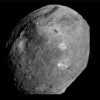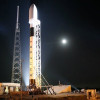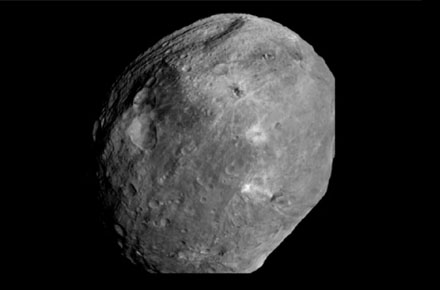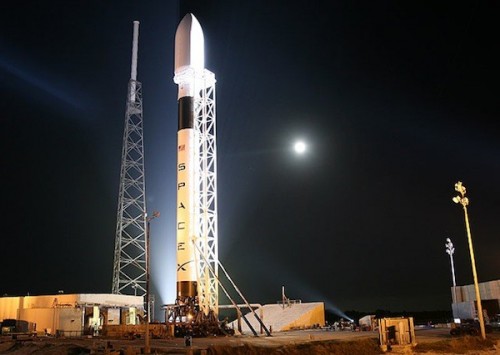Rockstars of Science – James F. Bell III

 Professor James F. Bell III is an astronomy scientist who has recently received the Carl Sagan Medal for Excellence in Public Communication in Planetary Science for his contributions in bringing the public greater understanding of current discoveries and research in the planetary sciences.
Professor James F. Bell III is an astronomy scientist who has recently received the Carl Sagan Medal for Excellence in Public Communication in Planetary Science for his contributions in bringing the public greater understanding of current discoveries and research in the planetary sciences.
Professor Bell’s work focuses on creating complete pictures of the different physical environments of moons, planets, comets, and asteroids.
He specifically researches the geology, mineralogy, and geochemistry of each of these solar system objects in order to compare and contrast them to similar Earth findings.
Professor Bell has also made significant contributions to several NASA missions that have gathered and analyzed a variety of terrain specimens from Mars, and his work in creating real-time imaging feeds of the red planet has given the public more in-depth access than ever before to exploring this neighboring planet.
Education
Professor Bell received his Bachelor of Science degree in Aeronautics and Planetary Science in 1987 from the California Institute of Technology in Pasadena. He then went on to pursue advanced studies at the University of Hawaii at Manoa. He earned his Master of Science degree in Geology and Geophysics in 1989 followed by his doctorate in the same field in 1992.
After completing his Ph.D., he completed an additional three years of post-doctoral work for NASA at the Ames Research Center.
This notable scientist has contributed a substantial volume of innovative written research to peer-reviewed scientific journals; he has thus far published more than 30 academic articles and collaborated with other scientists on an additional 140 research papers on a variety of space exploration topics.
He frequently brings his insights to astronomy conferences and has helped create over 400 presentations and abstracts for the scientific community.
Distinguished Author
Professor Bell’s extensive work is not confined to academic research; he has also published several books that have captured the public’s interest in both Mars and the Earth’s moon. His book entitled Postcards From Mars has received excellent reviews from famous writers such as Ray Bradbury, and this work has a dynamic accompanying website that offers visitors a good look at just how different and yet how similar this planet’s landscapes are when compared to Earth’s.
His book also provides interesting accounts of the interplanetary exploration process. Professor Bell’s photographic work of the Martian landscapes has drawn comparisons to that of master landscape photographers; Postcards From Mars draws a definite and noticeable distinction between the process of taking photographs and acquiring images during any type of space exploration mission.
Following the publication of Postcards From Mars in 2006, Professor Bell completed Mars 3-D: A Rover’s Eye View of the Red Planet. This book is a collection of Martian landscape photos specifically taken from unmanned exploration vehicles controlled remotely through robotic technology.
These images were taken over a period of four years during two different missions, and Professor Bell focused this body of work on creating realistic pop-out three-dimensional depictions of the geologic terrain of this planet.
His third book is entitled Moon 3-D: The Lunar Surface Comes to Life, a text that takes a similar in-depth look at the make-up of the rock formations and minerals of the moon’s surface.
Academia
In addition to his work with NASA missions, Professor Bell has a notable presence in academia where he has goals of imparting knowledge of the planetary sciences to the next generation of explorers and researchers. He currently teaches in the School of Earth and Space Exploration at Arizona State University in Tempe, Arizona.
Professor Bell also holds an adjunct teaching position at Cornell University’s Department of Astronomy in upstate New York. He has also served as a senior research associate at Cornell prior to teaching at the school. Professor Bell’s curriculum includes both undergraduate and graduate courses in astronomy topics such as the structure of the solar system, planetary surface spectroscopy, and image processing of planet landscapes.
Professor Bells leads an active doctoral student research group that conducts extensive scientific testing of samples collected from the Martian and lunar surfaces. These include dust particles, soil samples, and volcanic trace matter. He directs collaborative teams from several schools such as Arizona State, Cal Tech, and the University of Winnipeg in Ontario, Canada.
Several of his student researchers have gained recognition for their applications of spectroscopic technology to detect possible past water sources on Mars. The scientific community considers this evidence particularly important in terms of the red planet’s potential for supporting life either in the distant past or the relatively distant future.
Current Projects
Some of Professor Bell’s current projects include numerous speaking engagements intended to generate interest in astronomy and the aeronautical sciences. He has also been involved in many teachers’ workshops that have demonstrated ways for other educators to bring the excitement of studying the solar system to their classrooms.
Professor Bell currently serves as President of The Planetary Society, which strives to give both amateur and professional space exploration enthusiasts a platform to connect with one another and keep up on the latest planetary science news.
The Planetary Society currently works under Professor Bell’s leadership to promote new technologies for space travel. Members have recently combined their diverse scientific knowledge to build and test experimental solar-powered space craft that draws acceleration power from the sun’s photons. Their research has shown that these solar sail crafts could potentially reach distances far beyond what conventional fuel-powered rockets can presently travel in space.
Professor Bell and the rest of the Planetary Society have successfully raised enough money through generous donations to launch one solar sailing test flight, and they are making plans for more in the near future.
Professor Bell is actively working with the rest of the Planetary Society to discover and catalog planets beyond our solar system. He has helped develop techniques of determining whether these planets may have moons or asteroids in their orbits and whether any of the latter may pose a hazard to Earth at some point in the distant future.
These are known as exoplanets, and Professor Bell stresses the importance of the public taking the initiative to learn about the exoplanets’ characteristics such as their relative sizes and proximity to Earth.
Accolades and Media
The Carl Sagan Medal is just one of Professor Bell’s recent awards and achievements in the realm of communicating the wonders of astronomy and space exploration to the public. He has received several NASA Group Achievement Awards for his imaging work on various Mars voyages such as the Pathfinder and Odyssey missions.
He has also made numerous recent television appearances on the History, National Geographic, and Discovery channels for specials covering Mars exploration and other related topics.
The premise behind Professor Bell’s work is that space and distant planet exploration should be accessible to everyone. This field of study is not just confined to a select group of highly trained scientists.
He continues to create outreach programs that strive to inspire people to learn more about the universe and thus develop a greater understanding of their role within it.











I know Bell, this will make his day that he is a “Rockstar” of science.